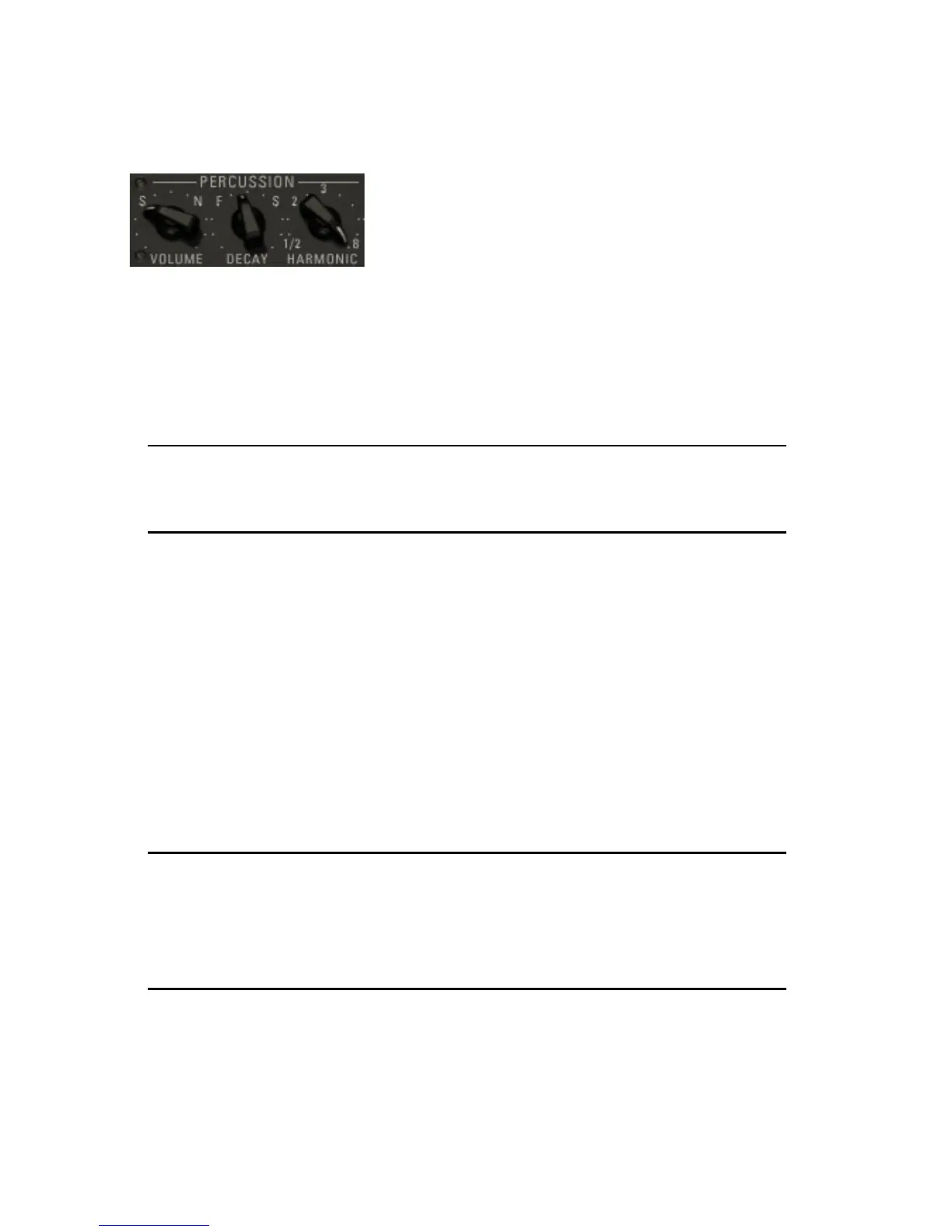B4 II – 69
and a Harmonium simulation right at your ngertips.
Percussion
The Percussion Volume control determines the amount of percussion effect
in the sound. The use of percussion provides a lightness to the sound, and
is particularly useful for jazz and house organ sounds. Percussion Volume
has only two positions on the B3: “Soft” and “Normal”. On the B4, this is
continuously variable over a wide range. The position corresponding to the
B3 setting “Soft” is labeled S and “Normal” is labeled N.
Note: When setting Percussion to the “Normal” volume on a stock B3,
the overall volume of the upper manual drops. This is regarded as a
drawback by most players and is not reproduced on the B4.
The Percussion Decay control determines the speed at which the percussive
sound decays. Percussion Decay only has two positions on the B3: “Fast”
and “Slow”. On the B4, this is continuously variable through a wide range.
The position corresponding to the B3 setting “Fast” setting is labeled F and
“Slow” is labeled S.
Percussion Harmonic controls the drawbar used for the percussion tone.
This control has 9 steps representing the 9 harmonic drawbars available
for percussion generation. The Percussion Harmonic Selector has only two
positions on the classic B3: “Second” (4’) and “Third” (2 2/3’). On the B4
any of the 9 Drawbars can be used as the source for the percussion sound.
The positions corresponding to the B3 settings are labeled 2 and 3.
Note: Just like on the B3, the B4 percussion effect is single-triggered,
meaning that it only starts with the rst key pressed and does not
retrigger with any notes played legato. Only after all upper manual keys
are released will percussion trigger again. B3 players know how to take
advantage of this in their playing technique.
